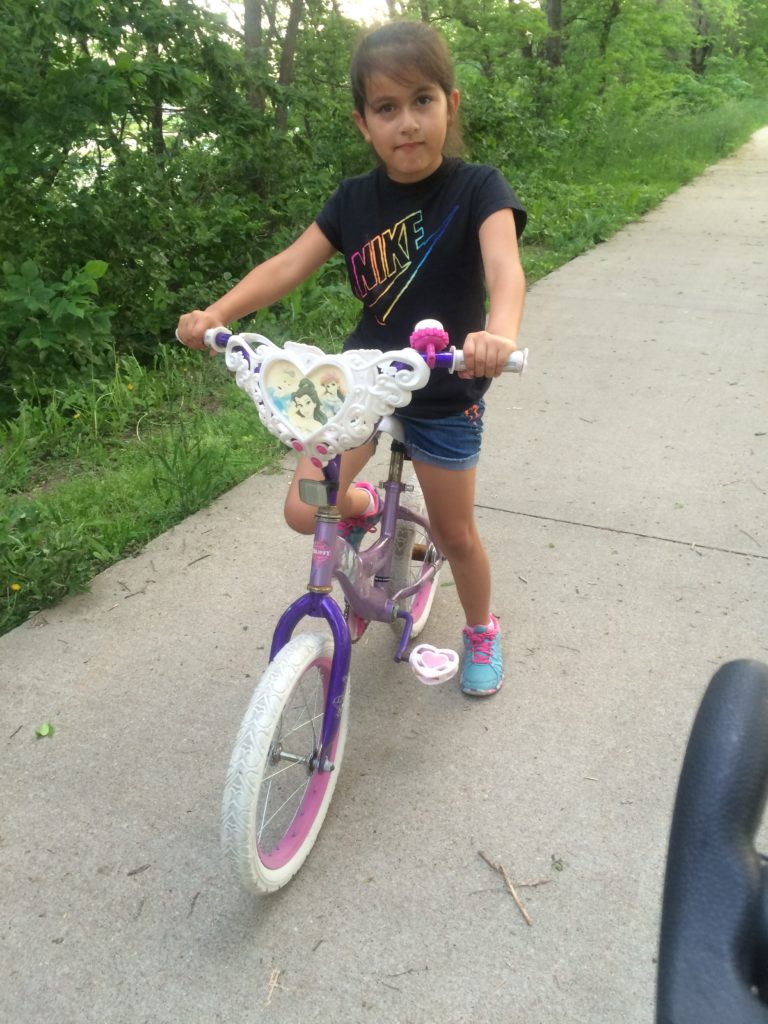It’s widely recognized that active transportation of children to school, meaning those riding bikes and walking, has dropped precipitously. In 1969 48% did it, in 2009, it was 14%. There are several reasons, according to SafeRoutesInfo.org., who goes into depth about the issue, but the main ones are 1. increased distance to school, and 2. and increased traffic danger. Some cities in the U.S. and abroad have found ways to reverse this trend, and one of them is with the Bike Bus. (See links at bottom)
Wikipedia states that “A bike bus, also known as a bike train[1] or a cycle train,[2] or cycle bus is a group of people who cycle together on a set route following a set timetable other than for sporting purposes. Cyclists may join or leave the bike bus at various points along the route. Most bike buses are a form of collective bicycle commuting (usually parents cycling their children together). A bike bus is often seen as a cyclist’s version of a walking bus, although walking buses tend to be seen as exclusively for children travelling to school. Bike buses may have social, environmental, or political aims. One of the founders of the Aire Valley Bike Bus said “The Aire Valley Bike Bus was set up … to encourage people to take up cycling and make the journey to work a more interesting and sociable experience.”.[3] The stated aim of the Central Florida Bike Bus is “bringing together cyclists who want to commute by bike using the same roads as every other vehicle”.[4] The aim of the D12BikeBus in Dublin 12, Ireland is to make cycling to school safer and easier while lobbying for safe cycling infrastructure.

Could a young BicycLincoln board president Andy Pedley have been on his way to school here?
The number of children riding to school can range from just a few to the 150 students at a Portland Oregon’s elementary school Every Wednesday, 27% of the school’s population joins the bike bus to school. This is from the organizer, P.E. teacher Sam Balto “I think students and families are showing up in such numbers because biking with friends is fun and enjoy the freedom bikes provide,” he said. “Parents love seeing their children being a part of the school community.”
Similar bike buses have taken off in places as diverse as San Francisco, Duluth, London, Barcelona, in Georgia and in India. They may have parents and other involved adults in the front and back and blocking traffic at intersections, and they may incorporate “school streets” , where traffic is prohibited in the blocks around schools at the beginning and end of the school days. Something that I would love to see in Lincoln. Rather than accommodating ever-increasing numbers of cars, creating more traffic and more headaches, why not address the root causes of the problem? The reason I’ve heard most from parents is that active transportation to school as too dangerous. parents dropping their child as close as possible to the door is not the best solution.

Princesses need safe routes to school, too.
We can have these new and improved approaches it we want them, but it takes organization and enough participants to get the attention of a larger threshold of people. Other places have found ways to do it, we can too. Often people just don’t know that there are better alternatives, and get caught in the prevailing way of doing things because that’s what they’ve been given. Why not start something new? Now is the time to plan.
https://usa.streetsblog.org/2022/09/08/epic-150-kid-bike-bus-shows-america-a-better-way-to-get-to-school/
http://guide.saferoutesinfo.org/introduction/the_decline_of_walking_and_bicycling.cfm
https://usa.streetsblog.org/2018/11/27/the-european-answer-to-school-drop-off-chaos/
https://www.route-fifty.com/infrastructure/2022/09/how-schools-bike-buses-won-over-students-and-charmed-internet/377863/
https://www.bloomberg.com/news/features/2022-02-10/kids-board-bike-trains-from-barcelona-to-san-francisco
